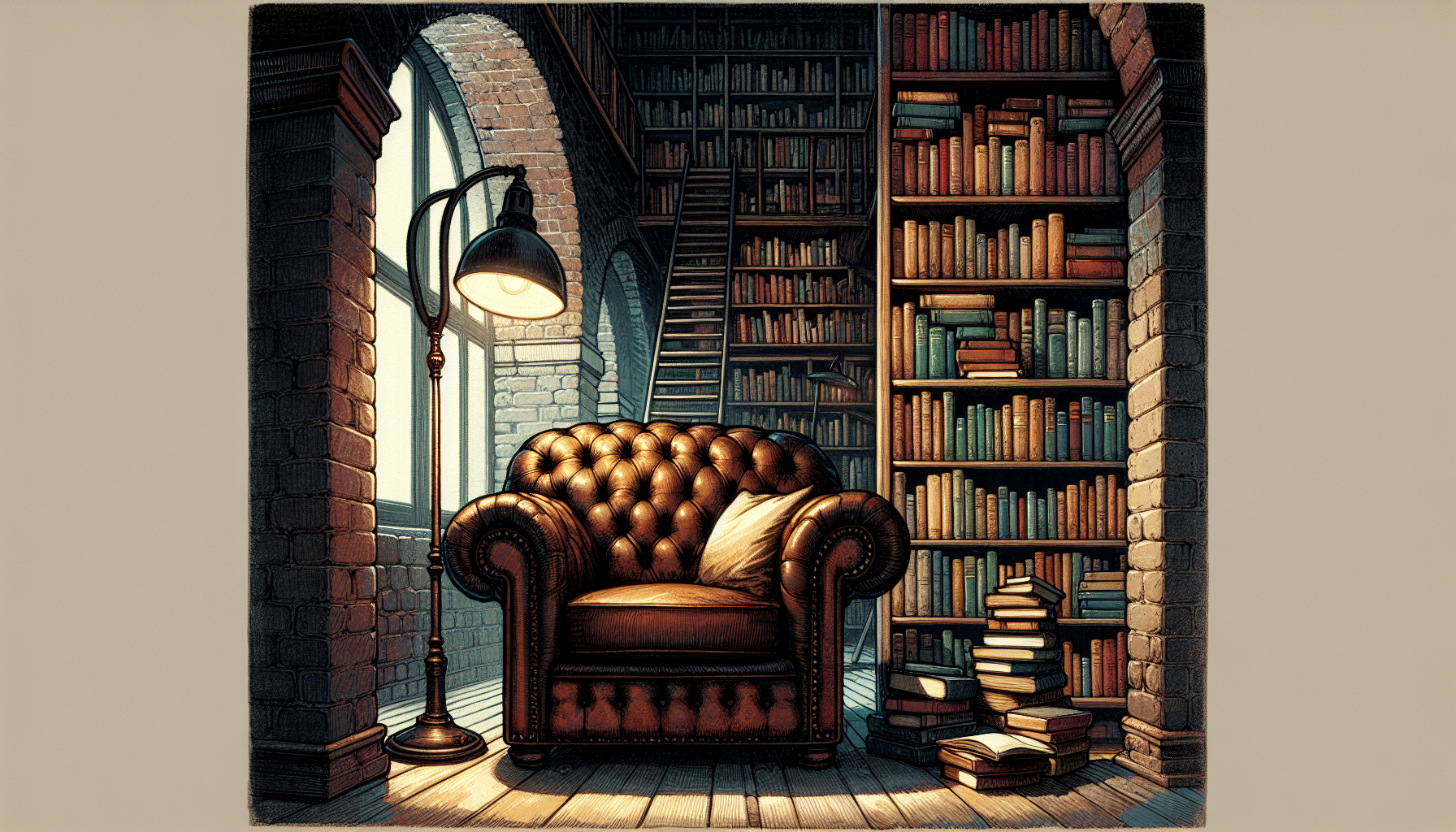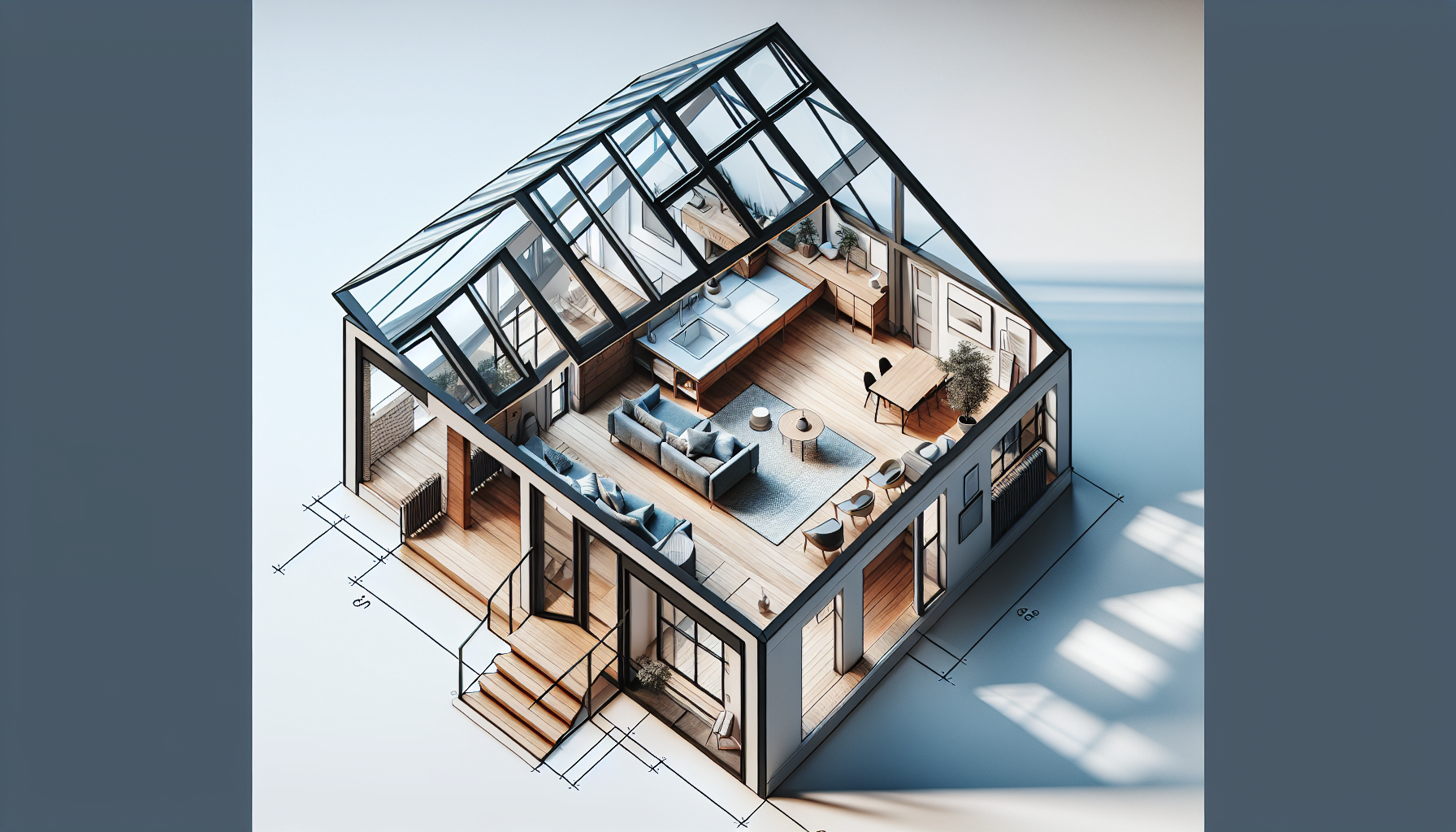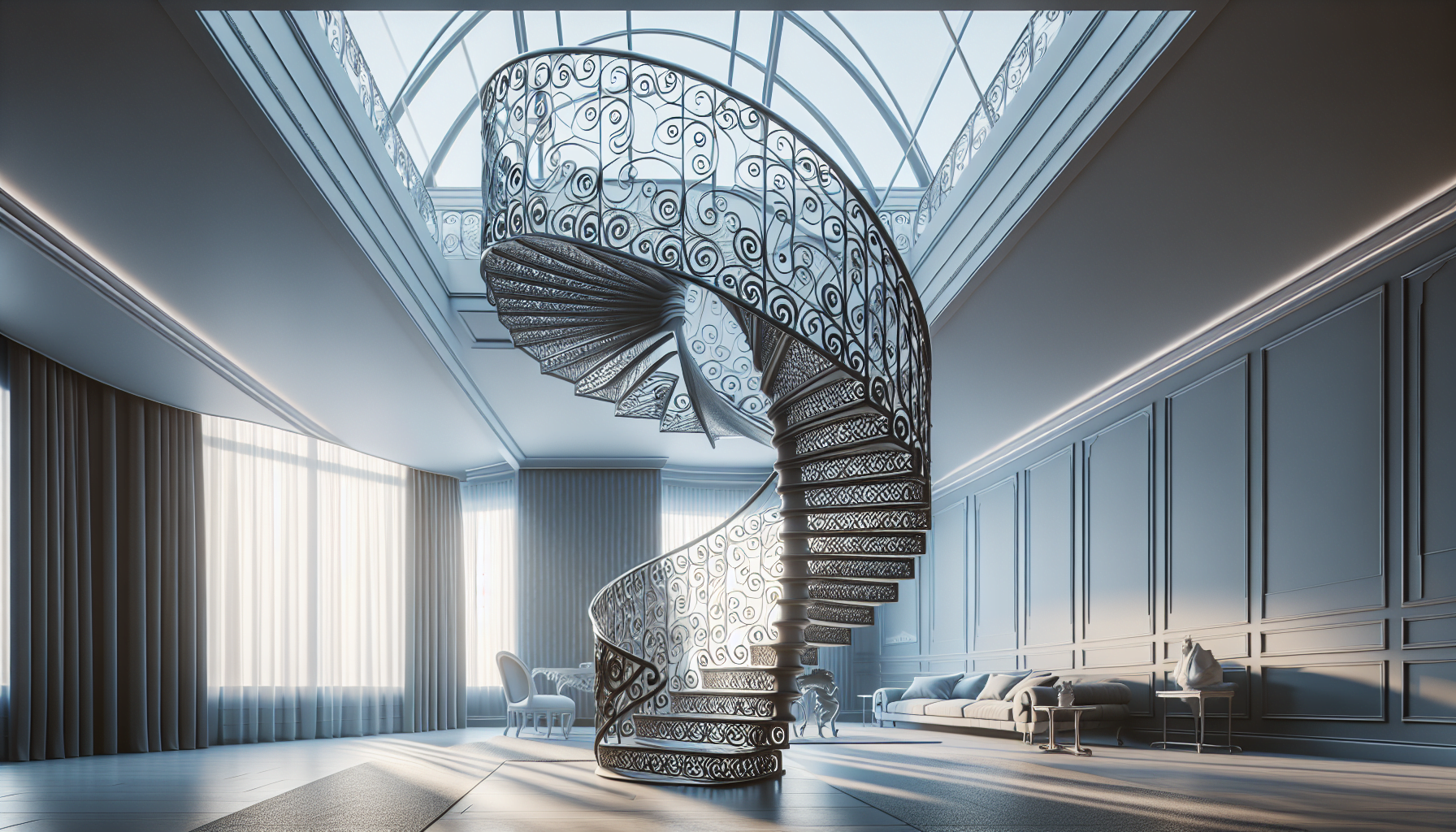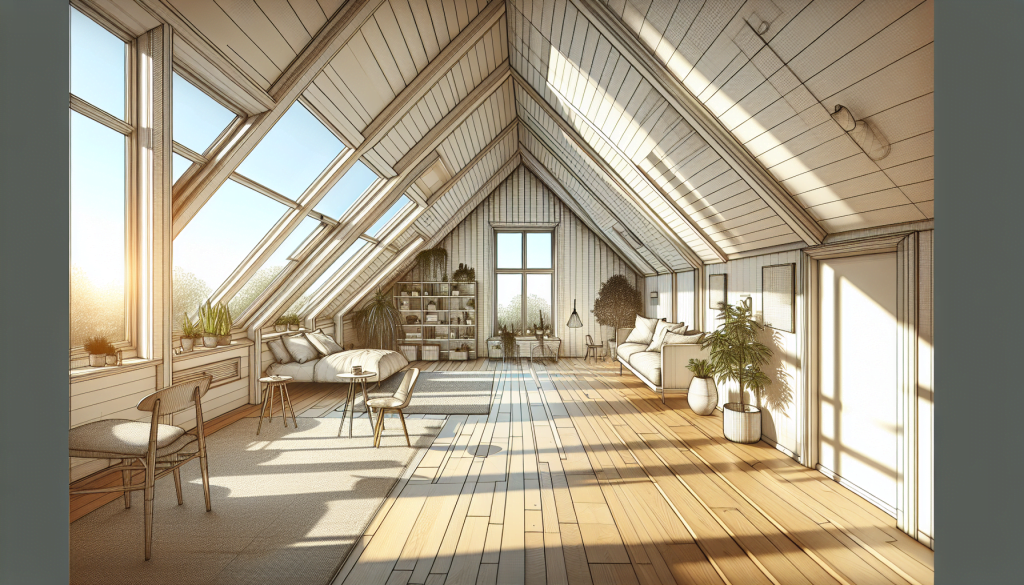Maximize your home’s potential with innovative loft conversion ideas. This article cuts right to the chase, offering 20 creative ways to convert your attic into a valuable living space. Explore space-saving designs, stylish themes, and essential planning tips to turn your loft into the dream area you desire. Get straight-to-the-point advice that turns your attic upgrade from concept to reality.
Key Takeaways
Loft conversions unlock property potential, offering creative solutions like maximizing natural light and smart storage to transform attics into functional and stylish living spaces.
Designing a loft requires strategic planning, such as embracing open-plan layouts and incorporating multipurpose furniture, to maximize both space and practicality while adhering to safety and building regulations.
Understanding and complying with building regulations and permissions, including potential Party Wall Agreements, is crucial in ensuring the loft conversion process is legally sound and respects neighbour relations.
Unlocking Your Loft’s Potential: Ingenious Conversion Concepts

Loft conversions are like unlocking a door to new potential within your home. Whether you’re craving a secluded home office, an enchanting playroom for your little ones, or an extra bedroom with breathtaking views, your attic space offers the perfect canvas for creativity. With a little ingenuity, even the most compact of lofts can become a haven of style and functionality.
Let’s explore some favourite loft conversion ideas, including a unique loft conversion idea that can redefine the way you live and interact with your home.
Embracing Natural Light with Roof Windows
Maximizing natural light is the key to transforming a dark and dusty attic into a radiant and welcoming loft conversion space. Strategically placed roof windows can bathe the room in sunlight, creating an inviting atmosphere that extends throughout the day. Skylights not only illuminate but also create an illusion of more space—perfect for a cosy loft bedroom or a top floor master suite.
When night falls, the addition of fairy lights can add a touch of magic, ensuring your loft remains a charming sanctuary.
Smart Storage Solutions for Compact Spaces
Efficient use of space is the cornerstone of a successful small loft conversion. Smart storage solutions are essential, especially in areas with sloping ceilings where traditional furniture might not fit. Some examples of smart storage solutions for small loft conversions include:
Bespoke attic wardrobes
Built-in storage
Under-bed storage
Wall-mounted shelves
Hanging storage
These solutions can be tailored to the unique contours of your roof space, ensuring that every inch is utilized.
Invisible timber systems offer a sleek look, helping maintain a clutter-free and spacious environment in your new loft space.
Designing the Perfect En Suite Bathroom
Imagine stepping from the comfort of your luxurious master suite into a stylish en suite bathroom tailored for relaxation and convenience. Placement is key; situating the bathroom near existing plumbing simplifies the installation process.
Indulge in the luxury of a power shower or a wet room, complete with underfloor heating for that extra touch of opulence. With careful planning and an eye for design, your en suite can become a standout feature of your stunning loft conversion.
The Art of Maximising Space in Loft Conversions

The true artistry in loft conversions lies in the ability to maximise space without sacrificing style or comfort. Ingenious design solutions can turn quirky attic angles and low walls into features that enhance both the form and function of your living space. From custom furniture to innovative layout plans, let’s delve into how you can make the most out of your converted loft space, creating an area that’s as spacious as it is beautiful.
Innovative Floor Plan Layouts
An innovative floor plan is vital for a loft conversion that feels both spacious and functional. Options like hip-to-gable and dormer conversions can transform a cramped attic into a roomy living space. Even within a more compact loft, cleverly designed mezzanine levels can add a new dimension, effectively doubling the usable area.
Light colors and adjustable shelving further enhance the sense of openness, ensuring your loft is not just a place to stay, but a place to live.
Multi-Purpose Furniture for Flexibility

Flexibility is at the heart of a well-designed loft space. Some furniture options that offer a seamless transition from day to night and make compact living feel luxurious include:
Sofa beds
Folding-wall beds
Sectional sofas tailored to fit under slanted roofs
Extendable tables
These furniture pieces provide a cosy spot for relaxation, accommodate dinner parties or work projects with ease, and maximize the use of space in a loft.
By choosing furniture that adapts to your needs, your loft becomes a versatile space that grows with you.
Clever Built-In Storage Options
Clever built-in storage options are the secret to maintaining a tidy and spacious loft conversion. Some ideas for maximizing storage in your loft conversion include:
Bespoke wardrobes and shelves that can be crafted to fit even the most unconventional spaces, ensuring that every nook is functional.
Push-latch doors on cupboards to keep the lines clean and the design sleek.
Hidden storage solutions to keep your belongings out of sight but within easy reach.
These storage options will help you make the most of your loft conversion and keep it organized.
With custom joinery, your loft can boast an elegant and organized environment.
Elevating Style: Loft Conversion Design Themes

A loft conversion is an opportunity to showcase your personal style and create a space that truly reflects your taste. Whether you’re drawn to the charm of rustic woods, the simplicity of modern minimalism, or the raw appeal of industrial chic, the right design theme can turn your loft into a stunning expression of your aesthetic.
Let’s explore the various design possibilities that can elevate your loft from mere living space to a true work of art.
Rustic Retreat: Exposed Beams and Wood Accents
For those who yearn for the warmth and character of a rustic retreat, exposed beams and wood accents can transform a loft space into a cosy haven. Reclaimed floorboards add texture and history, while large windows allow natural light to highlight the beauty of the timber elements.
Embracing the loft’s unique shape, a rustic theme can make your attic room a timeless sanctuary that feels both grounded and uplifting.
Modern Minimalism: Clean Lines and Monochrome Palettes
The principles of modern minimalism—clean lines, monochrome palettes, and uncluttered spaces—can bring a sense of calm and sophistication to your loft conversion. Opting for light colors and simple, functional furniture creates an environment that is not only visually appealing but also mentally soothing.
Incorporating Scandinavian design elements further enhances the minimalist aesthetic, making your loft a serene escape from the chaos of daily life.
Industrial Chic: Metal Details and Exposed Brickwork
Industrial chic gives a loft an edge with its bold blend of raw materials such as exposed brickwork and sleek metal details. Preserving structural elements like chimney stacks adds authenticity to the space, while contemporary furnishings and fixtures infuse it with modern flair. This design theme creates a dynamic environment that celebrates the building’s history while embracing urban sophistication.
The Ultimate Guide to Loft Conversion Stairs
The staircase is more than just a path to your new loft space—it’s a crucial design element that can make or break the flow of your home. From space-saving designs to stylish finishes, the right staircase not only meets building regulations but also complements the aesthetic of your loft conversion.
Let’s step through the considerations and creative options that will ensure your loft stairs are safe, practical, and visually appealing.
Space-Saving Staircase Designs

Space-saving staircase designs, such as spiral staircases and alternating tread stairs, are perfect for loft conversions where floor space is at a premium. Careful considerations of the layout, including the loft opening size, the floor-to-floor height, and adherence to safety standards, are essential in choosing the right staircase.
These efficient designs not only conserve space but also add a touch of architectural interest to your home.
Staircase Positioning for Optimal Flow
The positioning of your staircase is crucial for maintaining the architectural continuity of your home. Ideally, aligning the stairs with the existing stairwell or the roofline ensures a harmonious transition between the levels.
In bungalow conversions, placing the stairs at the loft’s highest point allows for a seamless and intuitive flow from one floor to the next.
Stylish Railing and Finish Options
The aesthetic of your staircase can be greatly enhanced with the right railing and finish options. Stair runners add comfort and style, while wall-mounted handrails offer a modern touch.
By selecting finishes that match the interior design of your loft, you can create a staircase that is not only functional but also a beautiful focal point in your home.
Transformative Dormer Window Installations
Dormer windows are transformative features that can turn a cramped loft into a bright and airy living space. Their installation not only increases natural light but also adds usable square footage and architectural charm to the exterior of your home.
Let’s delve into how dormer window installations can revolutionize your attic conversion, inside and out.
Expanding Usable Space with Dormers
Dormer windows are not only a source of natural light but also a strategic way to expand the usable space in your loft. By extending the roofline, dormers create additional headroom and floor area, allowing for a more versatile layout that can accommodate everything from:
a spacious bedroom
a home office
a playroom
a study area
Consider adding dormer windows to make the most of your dormer loft conversion, utilizing the available loft space to its full potential.
This added space can dramatically improve the functionality and comfort of your new loft conversion, making it feel like a seamless loft extension.
Aesthetic Considerations for Dormer Exteriors
The exterior of your dormer should harmonize with your home’s existing architecture. Whether you choose curved dormers for a traditional look or sleek modern finishes like blackened timber or red zinc cladding, the materials and design of your dormer can make a striking visual impact.
From chocolate box cottage charm to floor-to-ceiling glass modernity, dormers offer endless possibilities for enhancing your home’s curb appeal.
Integrating Balconies and Terraces
A loft conversion can extend beyond the interior with the integration of balconies or terraces. Some options to consider are:
Juliet balconies, which add charm and ventilation
Railed balconies, which provide extra outdoor space for relaxation
Larger terrace balconies, which offer panoramic views and ample room for entertaining
With careful planning and consideration of privacy and permissions, a balcony can become a cherished feature of your loft conversion.
Mastering the Master Suite: Luxurious Loft Ideas
Transforming your loft into a luxurious master suite is the ultimate indulgence. High-quality furnishings and thoughtful design can create a private oasis that rivals the finest boutique hotels.
From sumptuous bedding to spa-like bathroom features, let’s explore how to master the art of luxury in your loft conversion.
Crafting a Relaxing Bedroom Oasis
The master bedroom of your loft should be a sanctuary of relaxation. Utilizing calming colors and soft textures, you can create a tranquil atmosphere that is conducive to rest and rejuvenation. Drawing inspiration from boutique hotels, your loft bedroom can become synonymous with luxury and comfort, making it the perfect escape at the end of a long day.
Spa-Like Bathroom Features
A spa-like en suite bathroom can elevate your master suite to new levels of opulence. High-end fixtures and a stunning freestanding bath or power shower can transform your bathroom into a rejuvenating retreat. With careful design, your bathroom can become a highlight of your loft conversion, offering a private space for relaxation and pampering.
Dressing Room Delights
A dressing room within your loft conversion can provide a dedicated space for fashion and personal care. Walk-in wardrobes and bespoke built-in storage ensure that everything has its place, while unique features like a pink vaulted ceiling can add a wow factor.
Transforming your top floor into a spacious dressing area not only adds luxury but also practicality to your daily routine.
Ingenious Attic Bedrooms for Children and Teens
Creating bedrooms in the attic for children and teens offers an opportunity to design spaces that are both fun and functional. Tailored to meet the needs of growing minds and bodies, these bedrooms can become personal havens for creativity, study, and rest.
Let’s examine how to craft attic bedrooms that will delight the younger members of your household.
Playful Decor and Functional Design
When designing a child’s attic bedroom, consider the following:
Playful decor
Functional design
Bright colors
Versatile furniture choices
These elements provide a vibrant and adaptable space that can evolve as your child grows.
Gender-neutral designs ensure longevity, making the attic bedroom a joyful and practical space for years to come.
Teen Haven: Privacy and Personality
Teenagers crave a space that is uniquely theirs, and a loft conversion can offer just that—privacy with a touch of personality. Designing a teen’s attic bedroom with a sleeping zone, entertainment area, and a private dressing area allows for self-expression and independence.
By incorporating multifunctional furniture like a wide dresser that doubles as a nightstand and dressing area, you can optimize a small bedroom to meet the ever-changing needs of a teenager.
Study Zones and Lounge Areas
Incorporating dedicated zones for studying and lounging can significantly enhance the functionality of a loft space, especially for teens. By utilizing the area under the eaves, you can create a comfortable and concentrated study area, while a separate lounge space offers a place to unwind.
This thoughtful zoning ensures that the loft conversion meets the diverse needs of teenagers as they grow and their activities evolve.
Open Plan Living in the Sky
Embracing an open plan living space in your loft conversion creates a sense of freedom and fluidity. With the sky as your backdrop, an open plan loft provides a multipurpose area that can serve as a living room, study, or guest bedroom.
The integration of distinctive design features can make this airy space the crown jewel of your home.
Blending Kitchen, Dining, and Living Areas
An open-plan loft can perfectly accommodate a kitchen and dining area, creating an exceptional space for culinary adventures and social gatherings. The unique architectural features of an attic space offer a charming backdrop for an inviting kitchen that seamlessly flows into a dining and living area.
This blend of functionality and aesthetic appeal makes for an ideal setting for entertaining and everyday living.
Zoning Techniques for Open Plan Lofts
Strategic zoning is essential for maintaining organization and flow in an open plan loft. Furniture, rugs, and lighting can define different areas within the space without the need for walls. This allows for the creation of distinct zones that serve various purposes—be it a cozy reading nook, a vibrant entertainment space, or a quiet study area—while still preserving the openness of the loft.
Enhancing Openness with Glass Partitions
To maintain the open feel of your loft while creating separate functional areas, glass partitions are an exquisite solution. They provide a clear division of space without obstructing light or views, allowing for a cohesive design that feels both spacious and intimate.
Whether it’s between a sleeping area and a home office or enclosing a balcony, glass partitions can elevate the aesthetics of your loft conversion.
Creating a Sanctuary: Unique Loft Retreats
Loft spaces offer the perfect opportunity to create your own space, a sanctuary where you can escape the hustle and bustle of daily life. From meditation corners to home gyms, your attic can be transformed into a unique retreat that caters to your passions and hobbies.
Let’s explore the various ways you can turn your loft into a personalized oasis.
Serene Meditation and Yoga Spaces
The secluded and tranquil nature of a loft makes it an ideal setting for a meditation or yoga space. The architectural uniqueness of the loft adds to the serene atmosphere, providing a quiet spot for reflection and practice.
With the right design elements, such as calming colors and minimal decor, your loft can become a haven for mindfulness and wellbeing.
Home Gyms with a View
A home gym in your loft conversion can offer the convenience of a workout space with the bonus of stunning views. Strategic placement of roof lights and windows can flood the area with natural light, creating an uplifting environment for exercise.
With smart layout choices and multifunctional fitness equipment, your loft gym can be both compact and comprehensive, providing everything you need for a great workout at home.
Artist Studios Bathed in Light
For the creatively inclined, an artist’s studio in the loft can be a dream come true. Some features that make it ideal for artists include:
Skylights and ample windows to ensure that the space is drenched in natural light, which is essential for any artist.
Neutral and soft color schemes that can serve as the perfect canvas for your creations.
The seclusion of the loft provides the peace necessary for artistic inspiration.
Planning for Success: Navigating Building Regulations and Permissions
The final step in your loft conversion journey involves navigating the maze of building regulations and permissions. It’s a process that can be as complex as it is critical, ensuring that your dream space is not only beautiful but also safe and legal.
Let’s break down the essentials you’ll need to know to plan for success and avoid any legal pitfalls.
Decoding Building Regulations
Understanding and adhering to building regulations is an absolute must for any loft conversion. These regulations cover everything from structural integrity to fire safety and are designed to ensure that your new loft space is constructed to the highest standards.
Paying close attention to the details, such as staircase design and headroom requirements, can save you from costly and time-consuming issues down the line.
The Ins and Outs of Planning Permission
Whether or not you need planning permission for your loft conversion depends on various factors including the type of conversion, the size, and the location of your property. It’s important to know when your project falls under permitted development rights or when a formal application is required.
Obtaining a lawful development certificate can provide peace of mind and legal assurance for your conversion.
Party Wall Agreements and Neighbour Considerations
Loft conversions in semi-detached or terraced homes often require a Party Wall Agreement with neighbors, as per ‘The Party Wall Act 1996’. This legal document addresses any potential impact on shared walls and is an important step toward maintaining good relations with your neighbours while ensuring that your conversion complies with all necessary regulations.
Summary
From the initial spark of inspiration to the final touches of decor, transforming your loft space into a beautiful and functional part of your home is a journey of creativity and careful planning. By embracing innovative design, maximizing space, and navigating the complexities of regulations, you can turn your loft conversion dream into a stunning reality. May your newly transformed attic space bring you joy, comfort, and a fresh perspective on the possibilities of your home.
Frequently Asked Questions
Do I need planning permission for a loft conversion if I’m not altering the roofline?
You may not need planning permission for a loft conversion if it falls within permitted development rights, but it’s best to check with your local authority or obtain a lawful development certificate for confirmation.
Can I convert my loft into a bedroom without adding windows?
No, building regulations typically require windows for habitable spaces like bedrooms in a loft conversion to provide natural light and ventilation. Incorporating roof windows or skylights is a common solution to meet these requirements.
How can I ensure my loft conversion meets fire safety regulations?
To ensure your loft conversion meets fire safety regulations, consult a building control inspector for specific guidance on requirements such as fire-resistant doors and smoke alarms. These are key elements to consider when aiming for compliance.
What is the best way to maximize space in a loft with sloping ceilings?
Maximize space in a loft with sloping ceilings by using smart storage solutions like built-in wardrobes and low-level cupboards, as well as choosing furniture that fits the unique angles of the room.
How can I integrate a balcony into my loft conversion?
Integrating a balcony into your loft conversion involves structural and design considerations and may require planning permission. Options include dormer conversions or using Juliet or railed balcony designs, subject to local authority approval.
